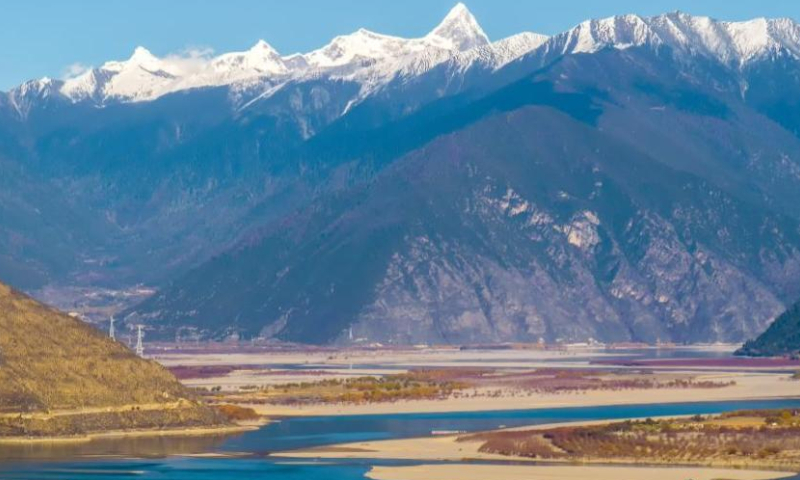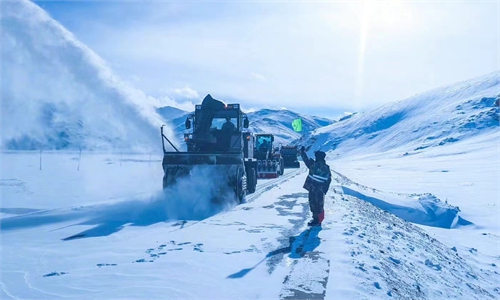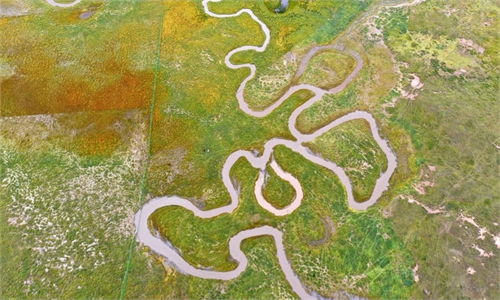
Beautiful winter scenery of the Yani National Wetland Park with snow capped mountain in the background in Nyingchi, southwest China's Tibet Autonomous Region, Nov. 19, 2022. (Photo: China News Service/Dong Zhixiong) With a total area of 8,738 hectares, the Yani National Wetland Park is located at the confluence of Yarlung Zangbo River and Niyang River in Milin County and Bayi District of Nyingchi.
A research groups made up by Chinese scientists have proposed an innovative dating method for complex fluvial deposits, bringing a new perspective to the understanding of the Qinghai-Tibet Plateau on various timescales, according to Lanzhou University.
The new method helps understand the relationship between human settlement, climate change, and the frequency of flooding at long time scales, especially for that on the Qinghai-Tibet Plateau, said Li Guoqiang, a professor at the College of Earth and Environmental Sciences of Lanzhou University.
Dubbed "the water tower of Asia," the Qinghai-Tibet Plateau provides water supply for many rivers in Asian. Floods on the plateau have increased dramatically in recent decades result from climate change and global warming.
A joint team comprising researchers from Lanzhou University, the Chinese Academy of Sciences and other institutions established the new method of optical stimulated luminescence (OSL) dating of complex fluvial deposits by using diverse techniques such as luminescence characteristics analysis, age calculation modelling, a comparison of quartz OSL ages, and radiocarbon dating ages, according to Li.
The new method has been verified effective through dating of fluvial deposits at the Shalongka archaeological site in the northeastern part of the Qinghai-Tibet Plateau.
It provides a scientific basis for forecasting and tackling climate change, Li added.
The study results have been published in the journal Quaternary Science Reviews.
Xinhua



